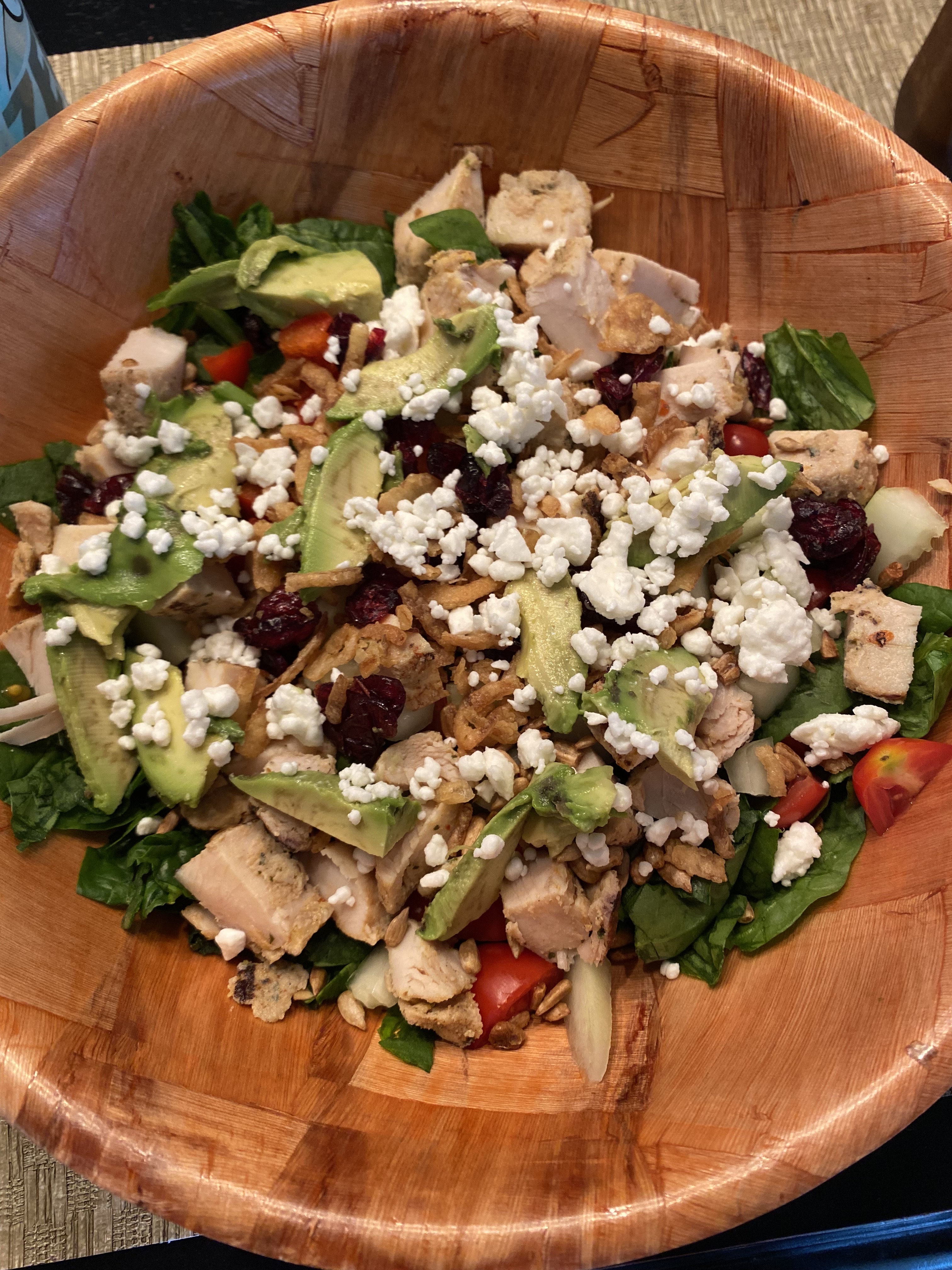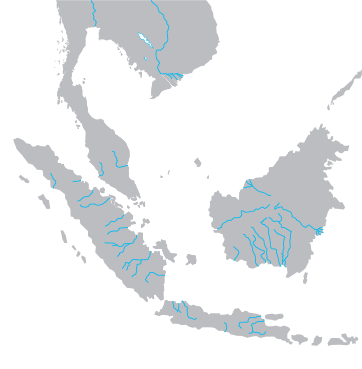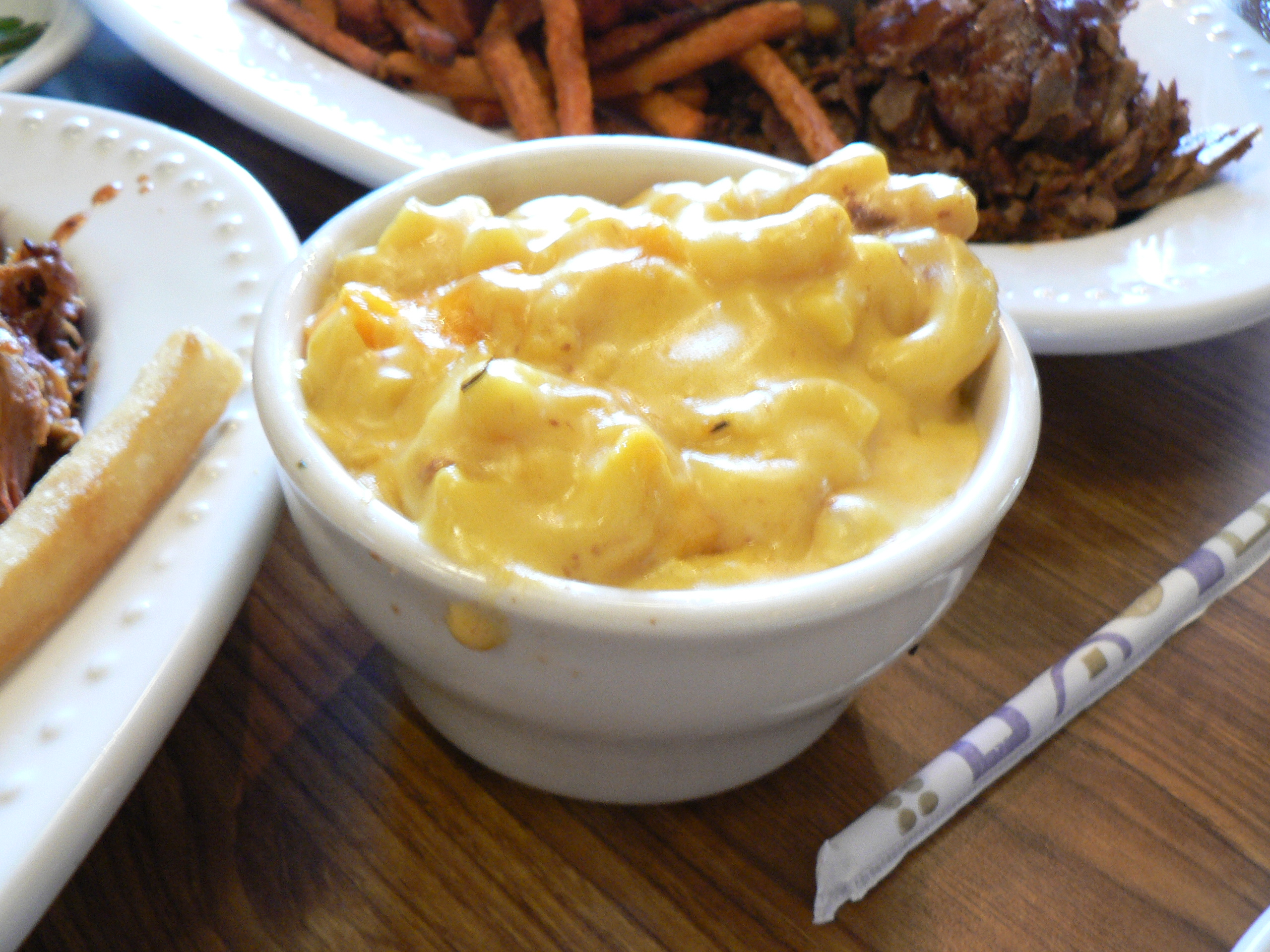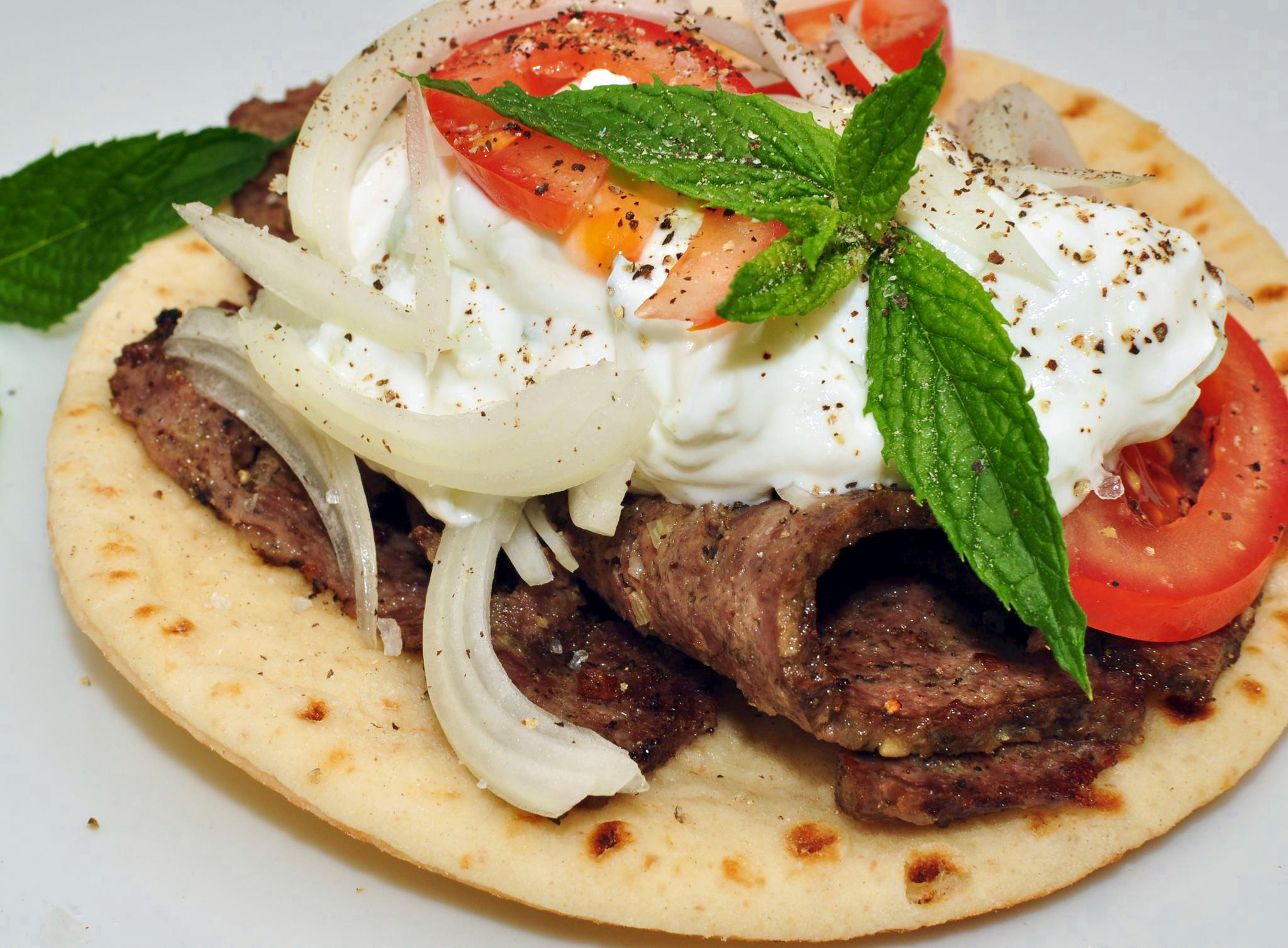|
Nasi Kerabu
Nasi kerabu ( Kelantanese: ''Nasik kabu''; Jawi: ناسي کرابو) is a Malaysian rice dish, a type of ''nasi ulam'', in which blue-colored rice is eaten with dried fish or fried chicken, crackers and other salads. The blue color of the rice comes from the petals of ''Clitoria ternatea'' (butterfly-pea) flowers ''(bunga telang)'', which are used as a natural food coloring in cooking it. The rice can also be plain white rice or rice cooked using turmeric. It is often eaten with ''solok lada'' (stuffed peppers) and is also eaten with fried '' keropok''. ''Nasi kerabu'' is very popular in the east coast states of Peninsular Malaysia such as Kelantan and Terengganu, and now can be found throughout Malaysia as well as in Pattani. Origin and distribution Boiled rice has been a key source of carbohydrates in the diet of the people of Malacca and Malay Archipelago since ancient times, and is an essential component of many local dishes. Most often, a portion of rice boiled in ... [...More Info...] [...Related Items...] OR: [Wikipedia] [Google] [Baidu] |
Keropok
' ( Javanese) is an Indonesian deep-fried cracker made from starch and other ingredients that serve as flavouring. They are a popular snack in parts of Southeast Asia, but are most closely associated with Indonesia. ''Kroepoek'' also can be found in the Netherlands, through their historic colonial ties with Indonesia. Etymology ''Krupuk'' in Javanese means "fried side dish" (made of flour, mixed with other ingredients). The word was later absorbed into other languages and stylized according to local pronunciations. In Indonesia, Brunei, Malaysia, Thailand, Singapore, and the Philippines, ''krupuk'' is known under a general name with minor phonetic variations. It is called "" in Indonesian, while in Malay, it is "". In Dutch, it is "'" ("oe" being equivalent to "u"), which was also the original spelling prior to the establishment of modern Indonesia and post-independence spelling reform. The Javanese onomatopoeia for the sound of crunchy foods (''krauk'' for a big cru ... [...More Info...] [...Related Items...] OR: [Wikipedia] [Google] [Baidu] |
Capsicum
''Capsicum'' () is a genus of flowering plants in the Solanum, nightshade family Solanaceae, native to the Americas, cultivated worldwide for their edible fruit, which are generally known as "peppers" or "capsicum". Chili peppers grow on five species of ''Capsicum''. Bell peppers, Sweet or bell peppers and some chili peppers are ''Capsicum annuum'', making it the most cultivated species in the genus. History ''Capsicum'' is native to South America and Central America. These plants have been evolving for 17 million years. It was domesticated and Mesoamerican agriculture, cultivated at least since 3000 BC, as evidenced by remains of chili peppers found in pottery from Puebla and Oaxaca. Etymology and names The generic name may come from Latin , meaning 'box', presumably alluding to the pods; or possibly from the Greek language, Greek word , , 'to gulp'. The name ''pepper'' comes from the similarity of piquance (spiciness or "heat") of the flavor to that of black pepper, ''Piper ( ... [...More Info...] [...Related Items...] OR: [Wikipedia] [Google] [Baidu] |
Herbs
Herbs are a widely distributed and widespread group of plants, excluding vegetables, with savory or aromatic properties that are used for flavoring and garnish (food), garnishing food, for medicinal purposes, or for fragrances. Culinary use typically distinguishes herbs from spices. ''Herbs'' generally refers to the leafy green or flowering parts of a plant (either fresh or dried), while ''spices'' are usually dried and produced from other parts of the plant, including seeds, Bark (botany), bark, roots and fruits. Herbs have a variety of uses including culinary, medicinal, aromatic and in some cases, spiritual. General usage of the term "herb" differs between culinary herbs and medicinal herbs; in medicinal or spiritual use, any parts of the plant might be considered "herbs", including leaves, roots, flowers, seeds, root bark, inner bark (and Vascular cambium, cambium), resin and pericarp. The word "herb" is pronounced in Commonwealth English, but is standard among American En ... [...More Info...] [...Related Items...] OR: [Wikipedia] [Google] [Baidu] |
Vegetables
Vegetables are edible parts of plants that are consumed by humans or other animals as food. This original meaning is still commonly used, and is applied to plants collectively to refer to all edible plant matter, including flowers, fruits, stems, leaves, roots, and seeds. An alternative definition is applied somewhat arbitrarily, often by culinary and cultural tradition; it may include savoury fruits such as tomatoes and courgettes, flowers such as broccoli, and seeds such as pulses, but exclude foods derived from some plants that are fruits, flowers, nuts, and cereal grains. Originally, vegetables were collected from the wild by hunter-gatherers and entered cultivation in several parts of the world, probably during the period 10,000 BC to 7,000 BC, when a new agricultural way of life developed. At first, plants that grew locally were cultivated, but as time went on, trade brought common and exotic crops from elsewhere to add to domestic types. Nowadays, most ... [...More Info...] [...Related Items...] OR: [Wikipedia] [Google] [Baidu] |
Salads
A salad is a Dish (food), dish consisting of mixed ingredients, frequently vegetables. They are typically served chilled or at room temperature, though some can be served warm. Condiments called ''salad dressings'', which exist in a variety of flavors, are usually used to make a salad. Garden salads have a base of raw leafy greens (sometimes young "baby" greens) such as lettuce, arugula (rocket), kale or spinach; they are common enough that the word ''salad'' alone often refers specifically to garden salads. Other types of salad include bean salad, tuna salad, bread salads (such as fattoush, panzanella), vegetable salads without leafy greens (such as Greek salad, potato salad, coleslaw), rice-, pasta salad, pasta- and noodle-based salads, fruit salads and dessert salads. Salads may be served at any point during a meal: *Appetizer salads – light, smaller-portion salads served as the first course of the meal *Side dish, Side salads – to accompany the main course as a side d ... [...More Info...] [...Related Items...] OR: [Wikipedia] [Google] [Baidu] |
Malay Language
Malay ( , ; , Jawi alphabet, Jawi: ) is an Austronesian languages, Austronesian language spoken primarily by Malays (ethnic group), Malays in several islands of Maritime Southeast Asia and the Malay Peninsula on the mainland Asia. The language is an official language of Brunei, Malaysia, and Singapore. Indonesian language, Indonesian, a standardized variety of Malay, is the official language of Indonesia and one of the working languages of East Timor. Malay is also spoken as a regional language of Malays (ethnic group), ethnic Malays in Indonesia and the Thai Malays, southern part of Thailand. Altogether, it is spoken by 60 million people across Maritime Southeast Asia. The language is pluricentric and a ISO 639 macrolanguage, macrolanguage, i.e., a group of Mutual intelligibility, mutually intelligible speech varieties, or dialect continuum, that have no traditional name in common, and which may be considered distinct languages by their speakers. Several varieties of it ar ... [...More Info...] [...Related Items...] OR: [Wikipedia] [Google] [Baidu] |
Side Dish
A side dish, sometimes referred to as a side order, side item, or simply a side, is a food item that accompanies the entrée or main course at a meal. (definition. Merriam-webster.com Accessed August 2011. Common types  Side dishes such as salad, potatoes and bread are commonly used with main courses throughout many countries of the western world. Rice and couscous have grown to be quite popular throughout Europe, especially at formal occasions (with couscous appearing more commonly at Party# ...
Side dishes such as salad, potatoes and bread are commonly used with main courses throughout many countries of the western world. Rice and couscous have grown to be quite popular throughout Europe, especially at formal occasions (with couscous appearing more commonly at Party# ...
[...More Info...] [...Related Items...] OR: [Wikipedia] [Google] [Baidu] |
Garnish (food)
A garnish is an item or substance used as a decoration or embellishment accompanying a prepared food dish or drink. In many cases, it may give added or contrasting flavor. Some garnishes are selected mainly to augment the visual impact of the plate, while others are selected specifically for the flavor they may impart. This is in contrast to a condiment, a prepared sauce added to another food item primarily for its flavor. A food item which is served with garnish may be described as being garni, the French term for "garnished." The difference between garnish and decoration, is garnish is edible. For example, plastic grass for sushi presentation is considered a decoration, not a garnish. Overview A garnish makes food or drink items more visually appealing. They may, for example, enhance their color, such as when paprika is sprinkled on a salmon salad. They may provide a color contrast, for example when chives are sprinkled on potatoes. They may make a cocktail more visually ... [...More Info...] [...Related Items...] OR: [Wikipedia] [Google] [Baidu] |
Coconut Milk
Coconut milk is a plant milk extracted from the grated pulp of mature coconuts. The opacity and rich taste of the milky-white liquid are due to its high oil content, most of which is saturated fat. Coconut milk is a traditional food ingredient used in Southeast Asia, Oceania, South Asia, and East Africa. It is also used for cooking in the Caribbean, Central America, northern parts of South America and West Africa, where coconuts were introduced during the colonial era. Coconut milk is differentiated into subtypes based on fat content. They can be generalized into coconut cream (or thick coconut milk) with the highest amount of fat; coconut milk (or thin coconut milk) with a maximum of around 20% fat; and coconut skim milk with negligible amounts of fat. This terminology is not always followed in commercial coconut milk sold in Western countries. Coconut milk can also be used to produce milk substitutes (differentiated as "coconut milk beverages"). These products are not ... [...More Info...] [...Related Items...] OR: [Wikipedia] [Google] [Baidu] |
Malay Archipelago
The Malay Archipelago is the archipelago between Mainland Southeast Asia and Australia, and is also called Insulindia or the Indo-Australian Archipelago. The name was taken from the 19th-century European concept of a Malay race, later based on the distribution of Austronesian languages. It has also been called the " Malay world," " Nusantara", "East Indies" over time. The name is controversial in Indonesia due to its ethnic connotations and colonial undertones, which can overshadow the country's diverse cultures. Situated between the Indian and Pacific oceans, the archipelago of over 25,000 islands and islets is the largest archipelago by area and fifth by number of islands in the world. It includes Brunei, East Timor, Indonesia, Malaysia (specifically East Malaysia), Papua New Guinea, and the Philippines.''Encyclopædia Britannica''. 2006. Chicago: Encyclopædia Britannica, Inc. The term is largely synonymous with Maritime Southeast Asia. [...More Info...] [...Related Items...] OR: [Wikipedia] [Google] [Baidu] |
Malacca
Malacca (), officially the Historic State of Malacca (), is a States and federal territories of Malaysia, state in Malaysia located in the Peninsular Malaysia#Other features, southern region of the Malay Peninsula, facing the Strait of Malacca. The state is bordered by Negeri Sembilan to the north and west and Johor to the south. The Enclaves and exclaves, exclave of Tanjung Tuan also borders Negeri Sembilan to the north. Its capital is Malacca City, which has been listed as a UNESCO World Heritage Site since 7 July List of World Heritage Sites by year of inscription#2008 (32nd session), 2008. Malacca has diverse tropical rainforest and experiences an equatorial climate. Situated immediately south of the Titiwangsa Mountains, the state is mostly level and dotted with inselbergs, with Bukit Gapis as the highest point. Although it was the location of one of the earliest Malay sultanates, namely the Malacca Sultanate, the local monarchy was abolished when the Portuguese Capture o ... [...More Info...] [...Related Items...] OR: [Wikipedia] [Google] [Baidu] |








